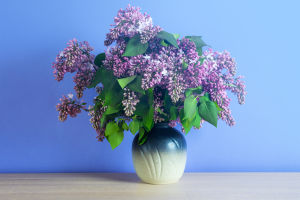Tulips, with their elegant shapes and rich colors, have become one of the most beloved flowers worldwide.
They not only showcase vibrant beauty in gardens but also play a significant role in floral arrangement art.
Let’s explore the significance, characteristics, and care techniques for tulip arrangements to help people better appreciate and utilize this beautiful flower.
1. Symbolism and Meaning
The significance of tulips is profound and varied. In Western culture, tulips are often seen as a symbol of love, especially red tulips, which represent passionate love and fervor.
In the Netherlands, tulips symbolize the country itself, with their blooming fields attracting countless visitors and showcasing the unique natural beauty of the nation. Different colors of tulips convey various emotions; for example, purple signifies nobility, yellow symbolizes friendship, and white conveys purity and apology.
Therefore, tulip arrangements can serve not only as decoration but also as expressions of the arranger’s feelings and intentions, making them an important part of social etiquette.
2. Arrangement Techniques
When arranging tulips, the selection and combination of flowers are crucial. It is essential to choose high-quality tulips, with straight stems, full buds, and vibrant colors. When pairing tulips with other floral materials, one can opt for flowers with complementary or adjacent colors to create a harmonious visual effect.
For instance, incorporating green foliage like ivy or ferns can add depth and liveliness to the arrangement. Additionally, using a mix of tall grasses and shorter flowers can enhance the overall dimensionality of the work.
During the arrangement process, different styles can be employed. It's important to cut the flower stems at an angle to increase the water absorption area and to change the water regularly to maintain the flowers’ vibrancy.
3. Care Techniques
To extend the viewing period of tulips, proper care methods should not be overlooked. First, placed in a cool, ventilated area, the arranged tulips should avoid direct sunlight and high temperatures, as excessive heat can lead to rapid wilting.
The water in the vase should be changed every few days, clearing out impurities and bacteria to keep it clean. Additionally, regularly checking the condition of the flower stems is necessary, and trimming them as needed can promote better water absorption.
In dry seasons, a small amount of nutrient solution can be added to the water to help tulips absorb nutrients more effectively. One might also consider placing the vase in a humid environment, such as near a water source or using a humidifier, to increase moisture in the air, thereby prolonging the flowers' freshness. If the petals begin to wilt, gently misting them with water can help rejuvenate the blooms.
Tulips, with their unique beauty and profound symbolic meanings, have become an indispensable part of floral art. By mastering the correct arrangement techniques and care methods, we can not only enhance the aesthetic appeal of floral arrangements but also experience the emotions and blessings that tulips convey. In daily life, using tulips to adorn home environments undoubtedly brings a dual enjoyment of visual and spiritual delight.


